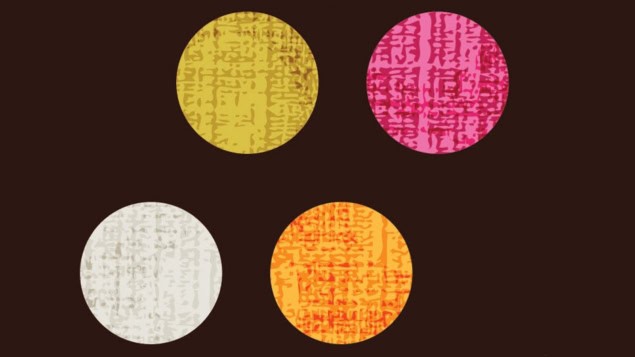
Supercomputer simulations done by a trio of physicists in India provide strong evidence for the existence of new type of tetraquark. Dubbed Tbc, the tetraquark comprises two heavy quarks (charm and beauty) and two light antiquarks (up and down). The simulations focused on the interaction of two mesons: one composed of a charm quark and a down antiquark, and the other made of a beauty quark and an up antiquark. A detailed analysis shows that the strong nuclear force should bind these mesons into a Tbc, which the trio believes could be discovered in accelerator experiments in the near future.
“Traditionally composite subatomic particles are categorized as mesons (comprising a quark and an antiquark) and baryons (comprising three quarks),” explain the researchers. “However, starting [in] 2003, there have been a large number of discoveries of exotic hadrons that defy the conventional picture of baryons and mesons, and calls for a description beyond these two simplest categories.” These exotic hadrons include tetraquarks ( comprising two quarks and two antiquarks) and pentaquarks (comprising four quarks and an antiquark).
One recent discovery is the Tcc+ tetraquark – two charm quarks, an up antiquark and a down antiquark – which was spotted by the LHCb collaboration. “Its bottom flavored cousin, designated Tbb, has long been hypothesized to be a strongly bound hadron, but finding it in experiments will be difficult in the near future because of its large mass,” say the researchers. However, the possible existence of the Tbc tetraquark had been unclear until now.
Lattice simulation
To find out whether the two mesons could combine to form Tbc, Padmanath Madanagopalan of the Homi Bhabha National Institute for Science Education and Archana Radhakrishnan and Nilmani Mathur of the Tata Institute of Fundamental Research, used a standard computational method for studying bound states of elementary particles. This involved simulating meson collisions in order to deduce how they could bind to each other to form a Tbc.
While this technique is ideal for studying electromagnetic and weak interactions, it requires enormous computing power to calculate the strong interactions involved in meson collisions. Such calculations involve approximating continuous space using a discrete lattice with a step size of a few hundredths of a femtometre – with quantum fields defined in its nodes and links between them.
“Calculation of the binding energies of tetraquarks is extremely challenging because of the nature of the strong interaction,” explains Tim Gershon of the UK’s University of Warwick, who was not involved in this latest study. “At high energy, strong interaction processes can be calculated ‘perturbatively’, which means considering exchange of one particle (the gluon – the mediator of the strong interaction) to be dominant with small corrections from two or more gluons exchanges.”
Very sophisticated algorithms
“Unfortunately, this does not work at lower energies where the strong interaction is ‘non-perturbative’, which means that interactions involving very large numbers of gluons need to be considered,” Gershon adds. “Various approximate methods exist to solve this puzzle. However, complete calculations can only be done using what is called lattice QCD (where QCD stands for quantum chromodynamics – the theory of the strong interaction). This involves using supercomputers and very sophisticated algorithms.”

Why LHCb is so good at discovering tetraquarks, medical sensors that are drawn on the skin
By performing lattice QCD calculations of the two mesons scattering, the trio deduced the strength of the interaction and found that it is attractive and about 100 times stronger than the attraction between mesons in Tcc+. This is a strong indication of the existence of the Tbc, and that the tetraquark is much more strongly bound and long-lived than Tcc+.
“In our work using a first principles method of lattice QCD we provide compelling evidence in the existence of this novel subatomic particle, and remove any earlier doubts,” conclude the trio. They add that their calculations should motivate experimentalist to search for the tetraquark. Indeed, the trio believes that there is a realistic prospect that the tetraquark could be discovered within the next 5–10 years.
The research is described in Physical Review Letters.
- SEO Powered Content & PR Distribution. Get Amplified Today.
- PlatoData.Network Vertical Generative Ai. Empower Yourself. Access Here.
- PlatoAiStream. Web3 Intelligence. Knowledge Amplified. Access Here.
- PlatoESG. Carbon, CleanTech, Energy, Environment, Solar, Waste Management. Access Here.
- PlatoHealth. Biotech and Clinical Trials Intelligence. Access Here.
- Source: https://physicsworld.com/a/simulations-point-to-the-existence-of-a-charming-and-beautiful-tetraquark/



